Tour Sri Lanka, The Land of Delights with Riolta Sri Lanka Holidays, Sri Lanka. Total Holiday Experience awaits you the beautiful ancient island of Sri Lanka.
The epic battle of Sri Lanka Part 1 by bunpeiris 2008
King Dutthagamini, ten Samson–like commanders & the unmanned, armored & armed beast, Kandula the battle elephant
We Reveal for you to Revel. Our Land, Our Nation & Our Faith will Prevail. bunpeiris

The history is (Mahawamsa) King Dutugamunu's army was commanded by ten mighty warriors, Nandhimitta, Suranimala, Mahasona, Gothaimbara, Theraputtabhaya (formerly a Buddhist monk, he gave up the Buddhist order for the sole purpose of saving the Sinhalese & Buddhism from the marauding Dravidian invaders), Bharana, Velusumana, Khanjadeva, Phussadeva & Labhiyavasaba, all of them of superhuman strength & courage sans Achilles heel. {Click here to read “Kataragama”, Sri Lanka}
Year: 161BC
Battle: Vijithapura, Anuradhapura, Sri Lanka {Click here for Anuradhapura}
Supreme Commander: King Dutugamunu, hero of the nation
War: ‘This effort of mine is not for the joy of sovereignty; it’s for the establishment of the Faith of Buddha forever.’ King Dutugamunu
Protoganists: Aryan Sinhalese of Sri Lanka & marauding Dravidian invaders from Southern India
Following extract is from Dr. Ananda P. Guruge’s translation of Mahawamsa, the great Chronicle of Sri Lanka ISBN -955-20-8963-8
By courtesy of Dr. Dr. Ananda P. Guruge
Subtitles in bald font is mine, for you entertainment, that is.
Numbered footnotes are mine too, if you don’t mind.
Testing the strength of his commander
While reconnoitering to capture Vijithapura, the ruler of men let loose Kandula upon Nandhimitta who was approaching. As the elephant came to him, Nandhimitta seized both its tusks with his hands & made it sit on its haunches. (1)
The relentless march of the king & his forces
Having tested both, the king marched to Vijithanagara. At the southern gate, there was fierce encounter of warriors. At the eastern gate, Velusumana on horse-back slew Damilas in great numbers. (2)
The Damilas retreats to the fortress with their tails in the Ass
The Damilas shut the gate & the king sent his warriors. Kandula, Nandhimitta & Suranimala at the southern gate & the three Mahasona, Gotha & Theraputta- at the other three gates-then did their deeds. (3)
Enter Kandula, the royal battle elephant
The city Vijitanagara had three moats & was protected by a high wall. The gate, worked in iron, was difficult to destroy. The elephant Kandula knelt down broke the stones, mortar, & bricks on which the gate was hung with its tusks, then charged the gate. (4) The Damilas, standing on the gate tower, hurled down various weapons, heated balls of iron, & molten pitch.
Kandula dives into water with burning wounds
When the smoking pitch was poured on its back, Kandula, tormented with pain, went to a pool of water & dived there. Gotha-Imbara said, “This is not your drinking party-the battering of the iron gate. Go, batter the gate” bathing time! The noble elephant took pride, trumpeted, got out of the water & stood on land defiantly
Kandula cheered up, wound dressed up & armored
The elephant’s physician then washed away the pitch & applied medicine. The king mounted the elephant & stroking its forehead with his hand, said “Dear Kandula, I give you sovereignty of the entire land of Lanka” Having cheered it on & got it fed with excellent fodder, he had wrapped with a shawl & well-clad in armor. Having had a seven-fold buffalo hide tied on its skin, he mad an oil-soaked hide to be placed above & released the elephant. Roaring like thunder & daring dangers, it went, pierced the gate-panels with its tusks, & struck the threshold with its foot. With an uproar, the gate crashed to the ground with jambs. (5)
Stalwart commanders & their forces break down the walls of the fortress
Nandhimitta struck with his arms & intercepted the debris of the great tower (6), which was falling on the back of the elephant. Seeing this deed, Kandula, with a pleased mind, abandoned the hatred (6) over the seizer by the tusks, which it, had earlier nursed. So that the warrior might enter behind it, Kandula, the best of elephants, turned around & looked at him there. Nandhimitta thought, “I shall not enter by the way opened by the elephant” & struck the wall with his arm.(7) Eight usabhas eighteen cubits high fell down.
It looked at Suranimala. He too did not wish to take that path & leaped over the wall into the city. Gotha & Sona entered, each breaking a gate
Kandula, already armored get armed too
The elephant seized a cartwheel,(8) Mitta a chariot-frame, Gotha a coconut-palm, Nimila an excellent sword, Mahasona a Palmyra-palm, Theraputta his great club, & rushing to the streets separately pulverized the of the Damilas there.
Throughout the 2550 years of unbroken recorded civilization of Sri Lanka, {click here to read} Sinhalese have captured tamed & trained elephants for logging operations, construction works, transportation, ceremonial & military purposes. The first description of the capture of elephants in 40 AD is by the Roman historian Pliny. Here, the information that he gathered was from the Sinhalese ambassador to the court of Emperor Claudius.
(1) The most intelligent & largest terrestrial animal has his own share of Achilles Heel. The Sinhalese catcher-trainer-keepers of elephants have discovered & mastered the science of picking the vital nerve centers of the beast so that it could be controlled & guided to rise to the occasion. It was possible, King Dutugamunu’s foremost commander, Samson-like Nandhimitta, in addition to being endowed with super human strength, was also armed with this science called Hasti Nila Shasthrya in Sinhalese & it would have enabled him to perform the Sandowesque feat of forcing Kandula to his haunches.
Where exactly this episode took place is now not known but the Mahavamsa itself records that in commemoration of this feat of Nandhimitta the locality came to be called Hatthipora i.e. “Elephant-tussle”
(2 & 3) They were not alone. Names of 10 stalwart Samson-like commanders are symbolic of the 10 contingents of King Dutugamunu’s army.
(4 & 5) Kandula was attacking the portal of the gate. While the gate was made of iron, the portal was built of stone, mortar & brick, which could be rammed in, dug into & dislodged by trampling with elephant feet & pushing with tusks. Kandula had weekend the portal to such an extent, on the second attempt, a furious battering on the gate coupled with the thrust on the portal made the great gate to crash on to the ground.
(6) Considering the possible weight of the debris & the height from which it should have fallen, to wound an elephant, one could surmise that Nandhimitta riding another elephant alongside Elephant Kandula was armed with a battering ram of considerable proportions.
(7) Long memory of the elephant is legendary; its faculties well known.
(8) With the long awaited crash of the great gate, the battle had risen to epic proportions. Coconut trees, Palmyra trees which would have been shattered by the rampaging contingent of elephants lead by Kandula appears to have been scattered all over the battle field. The stalwart captains of the king, supported by a couple of warriors in their respective contingents would have picked those scattered remnants of the trees & hurled those up on to the Damilas in the fortress.
ARMING THE BEAST
Quote Kandula the elephant at war ISBN 955-20-7998-5 by Prof. Merlin Peris, Emeritus Professor of Classics at the University of Peradeniya, Sri Lanka
Here the elephant wields only the wheel of a cart (perhaps the very cart the frame of which Nandhimitta was using to smash the Damilas), a weapon which any elephant could easily have swung about. This indeed something new, for in the fighting that preceded the assault on the fortifications, Kandula, without armor & without rider, appears to have gone on a rampage among the Damilas, weaponless as well, frightening them with blood-curdling trumpeting & killing them with bare trunk, tusks & feet.
On the other hand, it would not be surprising if someone had armed Kandual with the wheel, in which case he would have been habituated to use of such supplements to his bare trunk for wreaking havoc among the enemy. …..
In the havoc elephants caused in battle, their trunks did not go unarmed. A display has been witness of a gajakeliya in which war-elephants, charging dummy soldiers stuffed with straw, struck them down with lengths of chain weighted at either end with iron bars; then several elephants carried a palisade of logs chained together which sheltered the infantry following, while riders upon their backs hurled down spears & visu kadu (throwing swords) at the enemy.
The strange contraception of chain & iron bars must have been some kind of lethal flail coming down in uses from antiquity, but clubs (totra) may also have been used for swinging around with trunk; they certainly were in India, if we go by Kautilya- & no doubt with devastating effect, shattering & scattering everyone in the elephant’s path as he plunged like a modern-day mine-destroyer tank into the ranks of the enemy.
There is more definite evidence of the arming of the elephant’s trunk with swords. A 17th century painting from Degaldoruwa shows a war-elephant with what could be frontalia covering head & ears &, with tusks capped with metal points, holding a short sword in his curled trunk. De Queyroz confirms the uses of both the latter armaments when he says elephants which the Sinhalese deployed against the Portuguese had such metal points on their tusks & were trained to slash the enemy with swords held in their trunks-only, I cannot think that the swords then given to them would have been any ordinary ones but over-large weapons with which they could swathe through the enemy. Likewise the chain with bars may rather have been a bar with chains, a flail of sorts, which swung around by the elephant as he advanced, would have proved a devastating weapon. Only, the elephant needed to be practiced in the use of both sword & flail if he was not to hurt himself in the process.
In context, Kandula’s laying hold of a wheel for lack of the regular weaponry for arming the trunk bespeaks the practice of doing so.
Unquote
Kandula, on whom King Dutugamunu rode to victory over the Damilas, is without doubt, the greatest battle elephant known to history.End of part 1























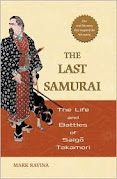


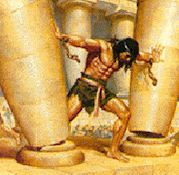












































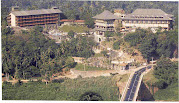








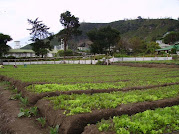














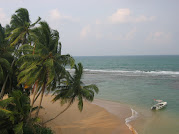












0 Comments:
Post a Comment